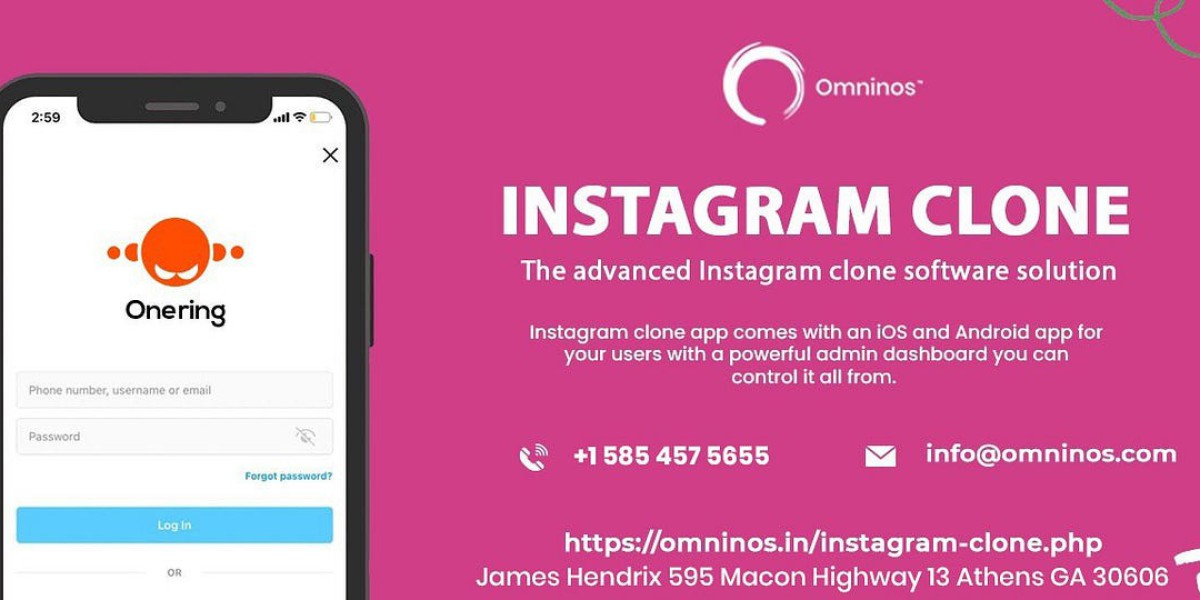In recent years, virtual reality (VR) has transcended its status as a mere buzzword and evolved into a transformative technology with profound implications across various industries. As VR continues to gain momentum, the focus is shifting towards the development of immersive experiences through virtual reality applications. This shift not only presents significant opportunities for developers but also underscores the importance of staying abreast of emerging technologies shaping the future of VR app development.
Understanding Virtual Reality App Development
Virtual reality app development involves creating software applications that leverage VR technology to deliver immersive experiences to users. These applications simulate a realistic environment, often using head-mounted displays (HMDs) and motion-tracking sensors to enable users to interact with and navigate the virtual world.
The development process for VR apps typically encompasses several stages, including ideation, design, development, testing, and deployment. Developers must possess a combination of technical expertise, creativity, and an understanding of user experience (UX) principles to create compelling VR applications.
The Current Landscape of Virtual Reality App Development
The current landscape of virtual reality app development is characterized by rapid innovation and experimentation. Developers are exploring diverse use cases spanning gaming, entertainment, education, healthcare, architecture, and more. This diversity reflects the broad applicability of VR technology and its potential to revolutionize numerous sectors.
Gaming remains a dominant force in VR app development, with developers continually pushing the boundaries of immersive gaming experiences. Titles like "Beat Saber," "Half-Life: Alyx," and "Superhot VR" have garnered widespread acclaim, demonstrating the transformative power of VR in gaming.
Beyond gaming, VR is making inroads into areas such as education and training. Educational VR applications offer immersive learning experiences that engage students and facilitate interactive exploration of complex subjects. Similarly, VR-based training simulations enable employees to acquire new skills in a safe and controlled environment, reducing the need for physical resources and minimizing risks.
In healthcare, VR is being used for medical training, pain management, therapy, and patient rehabilitation. Virtual environments can simulate medical procedures, enabling students and healthcare professionals to practice in a realistic setting. VR-based therapy applications are also proving effective in treating conditions such as phobias, PTSD, and anxiety disorders.
Architecture and real estate are another sector where VR is driving innovation. Virtual reality enables architects and developers to create immersive 3D models of buildings and properties, allowing clients to explore and visualize spaces before construction begins. This technology streamlines the design process, enhances communication, and reduces costly revisions.
Emerging Technologies Shaping the Future of VR App Development
Several emerging technologies are poised to shape the future of virtual reality app development, unlocking new possibilities and enhancing the user experience. These technologies span hardware innovations, software advancements, and novel approaches to interaction and content creation.
5G Connectivity: The rollout of 5G networks promises to revolutionize VR by delivering ultra-low latency and high-bandwidth connectivity. This enables seamless streaming of VR content, multiplayer experiences, and remote collaboration without sacrificing performance. 5G connectivity opens up new avenues for VR app development, particularly in areas such as live events, virtual meetings, and social experiences.
Augmented Reality (AR) Integration: The integration of augmented reality with virtual reality presents exciting opportunities for hybrid experiences that blend the virtual and physical worlds. By overlaying digital content onto the user's real-world environment, AR enhances immersion and enables new interaction paradigms. Developers can leverage AR technologies to create mixed reality experiences that seamlessly integrate virtual elements with the user's surroundings.
Eye-Tracking and Foveated Rendering: Eye-tracking technology allows VR systems to accurately track the user's gaze within the virtual environment. This enables dynamic foveated rendering, where high-resolution graphics are rendered only in the user's focal area, conserving computational resources and improving performance. Foveated rendering reduces the computational burden on VR hardware, enabling more realistic visuals and higher frame rates.
Hand Tracking and Gesture Recognition: Hand tracking eliminates the need for handheld controllers by enabling users to interact with virtual objects using their hands and fingers. This intuitive form of interaction enhances immersion and accessibility, making VR experiences more intuitive and engaging. Gesture recognition algorithms interpret hand movements and gestures, allowing users to manipulate objects, gesture-based navigation, and naturalistic interactions within the virtual environment.
Haptic Feedback and Tactile Sensation: Haptic feedback technology simulates tactile sensations and forces to provide users with a sense of touch within the virtual environment. By incorporating haptic feedback into VR controllers and wearable devices, developers can enhance immersion and realism, enabling users to feel the texture of objects, sense vibrations, and experience physical feedback during interactions. Advanced haptic systems offer precise control over tactile sensations, opening up new possibilities for immersive VR experiences.
Artificial Intelligence (AI) and Machine Learning: AI and machine learning algorithms play a crucial role in enhancing VR experiences by enabling intelligent behaviors, dynamic content generation, and personalized interactions. AI-powered characters and NPCs can exhibit lifelike behaviors, adapt to user actions, and provide responsive dialogue and interactions. Machine learning techniques can analyze user behavior and preferences to tailor content, adapt difficulty levels, and create personalized experiences in real-time.
Blockchain and Decentralized VR Platforms: Blockchain technology and decentralized VR platforms offer new models for content distribution, ownership, and monetization. By leveraging blockchain-based systems, developers can create transparent, secure, and decentralized marketplaces for VR content, allowing creators to directly monetize their work and users to own and trade virtual assets. Decentralized VR platforms also facilitate community-driven governance, content curation, and peer-to-peer interactions, fostering a more equitable and collaborative VR ecosystem.
Opportunities in Virtual Reality App Development
The evolving landscape of virtual reality app development presents numerous opportunities for developers, entrepreneurs, and businesses looking to capitalize on the growing demand for immersive experiences. Some key opportunities in VR app development include:
Content Creation and Distribution: The demand for high-quality VR content continues to grow, creating opportunities for developers and content creators to produce compelling experiences across various genres and industries. Content distribution platforms, app stores, and marketplaces provide avenues for developers to reach a global audience and monetize their VR applications.
Enterprise Solutions and Industrial Applications: Businesses are increasingly adopting VR technology for training, simulation, visualization, and collaboration purposes. Developing custom VR solutions for enterprise clients presents lucrative opportunities for developers, consultancy firms, and solution providers. Industries such as manufacturing, automotive, aerospace, and retail are investing in VR applications to streamline operations, improve productivity, and enhance customer engagement.
Healthcare and Wellness Solutions: The healthcare industry represents a promising market for VR applications aimed at medical training, patient care, therapy, and wellness. Developing VR solutions for hospitals, clinics, rehabilitation centers, and mental health facilities can address critical needs and improve healthcare outcomes. Additionally, partnerships with healthcare providers, research institutions, and pharmaceutical companies offer avenues for collaboration and innovation in this space.
Education and Training Platforms: Educational institutions, corporate training programs, and e-learning platforms are leveraging VR technology to deliver immersive learning experiences. Developing VR educational content, training simulations, and virtual classrooms presents opportunities to innovate in the education sector and address the evolving needs of learners. Partnerships with educational institutions, edtech startups, and training providers can facilitate the adoption of VR solutions in formal and informal learning environments.
Entertainment and Gaming Experiences: The gaming industry continues to drive innovation in VR app development, with opportunities for developers to create immersive gaming experiences, interactive narratives, and multiplayer environments. Developing VR games for mainstream gaming platforms, VR arcades, and location-based entertainment venues can attract a diverse audience of gamers and enthusiasts. Additionally, collaborations with publishers, IP holders, and entertainment studios can bring beloved franchises and intellectual properties to the VR medium, expanding the scope of immersive entertainment experiences.
Social and Communication Platforms: As virtual reality becomes more social and interconnected, there is a growing demand for VR social platforms, virtual worlds, and communication tools. Developing VR social experiences, virtual hangouts, and collaborative environments offers opportunities to connect people in new ways and foster meaningful interactions in the digital realm. Integration with existing social media platforms, messaging apps, and communication tools can enhance accessibility and interoperability, enabling users to seamlessly transition between the physical and virtual worlds.
Challenges and Considerations
While the future of virtual reality app development is filled with promise, it also presents several challenges and considerations that developers must navigate:
Hardware Fragmentation: The VR hardware landscape is characterized by a diverse range of devices with varying capabilities, specifications, and input methods. Developers must ensure compatibility and optimize their applications for different VR platforms, HMDs, controllers, and tracking systems to reach a broad audience effectively.
Performance Optimization: VR applications demand high levels of performance, responsiveness, and graphical fidelity to deliver immersive experiences without causing discomfort or motion sickness. Developers must optimize their applications for smooth frame rates, low latency, and consistent performance across different hardware configurations to ensure a comfortable and enjoyable user experience.
User Comfort and Accessibility: Designing VR experiences that are comfortable, accessible, and inclusive is essential for reaching diverse audiences and minimizing barriers to adoption. Developers must consider factors such as motion sickness, simulator sickness, ergonomic design, and accessibility features to accommodate users with varying needs, preferences, and abilities.
Content Discovery and Monetization: Despite the growing demand for VR content, discoverability and monetization remain challenges for developers and content creators. Navigating app stores, distribution platforms, and marketing channels requires strategic planning and effective promotion to attract users and generate revenue from VR applications.
Ethical and Privacy Concerns: As VR technology becomes more pervasive, ethical considerations surrounding privacy, data security, and digital ethics come to the forefront. Developers must prioritize user privacy, data protection, and ethical design practices when developing VR applications to safeguard user trust and mitigate potential risks.
Regulatory and Legal Compliance: Compliance with regulatory frameworks, industry standards, and intellectual property laws is crucial for ensuring the legality and legitimacy of VR applications. Developers must adhere to relevant regulations, licensing agreements, and copyright laws when creating and distributing VR content to avoid legal disputes and reputational damage.
Conclusion
The future of virtual reality app development holds immense potential for innovation, creativity, and impact across various industries. Emerging technologies such as 5G connectivity, augmented reality integration, eye-tracking, hand tracking, haptic feedback, and AI are reshaping the VR landscape and unlocking new opportunities for developers and businesses.
By embracing these technologies, developers can create immersive experiences that push the boundaries of storytelling, interaction, and immersion, enabling users to explore new worlds, learn new skills, connect with others, and experience the impossible. As VR continues to evolve and mature, the opportunities for virtual reality app development are limited only by the imagination and ingenuity of those who dare to dream of what's possible in the virtual realm.



